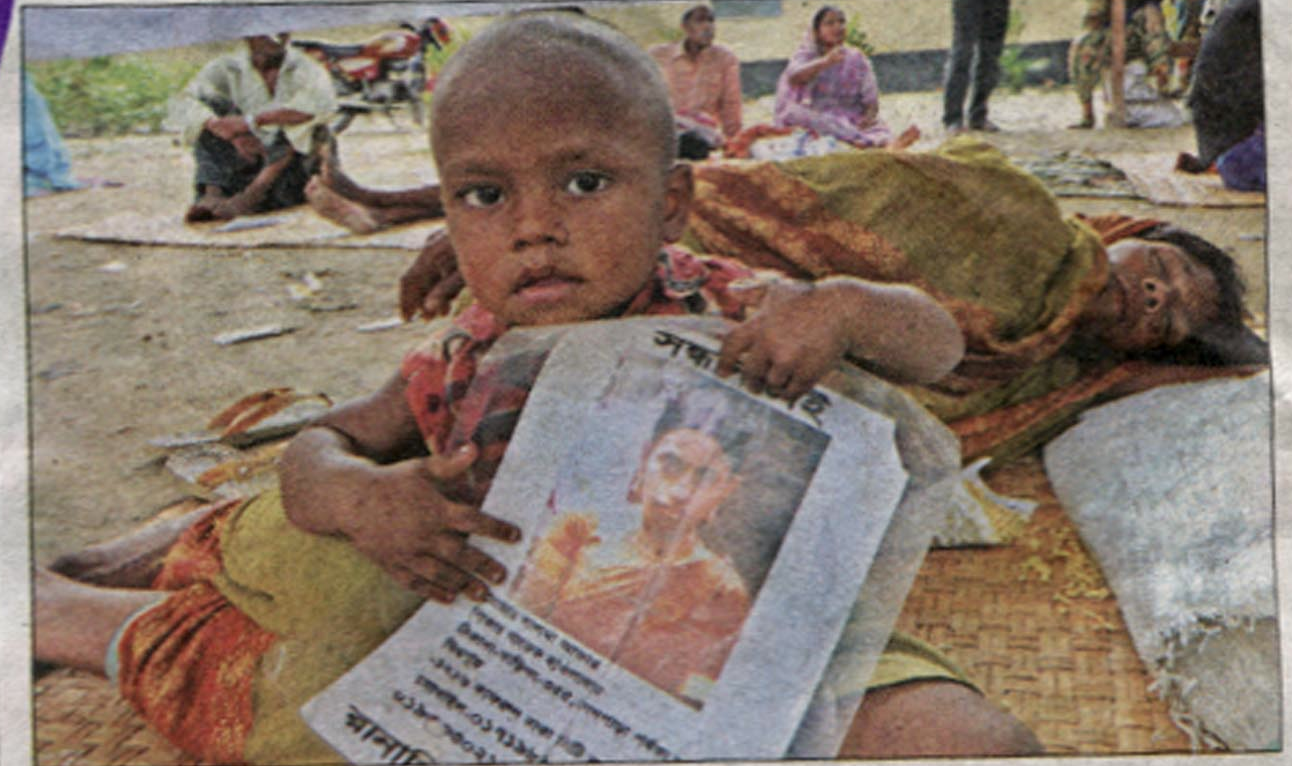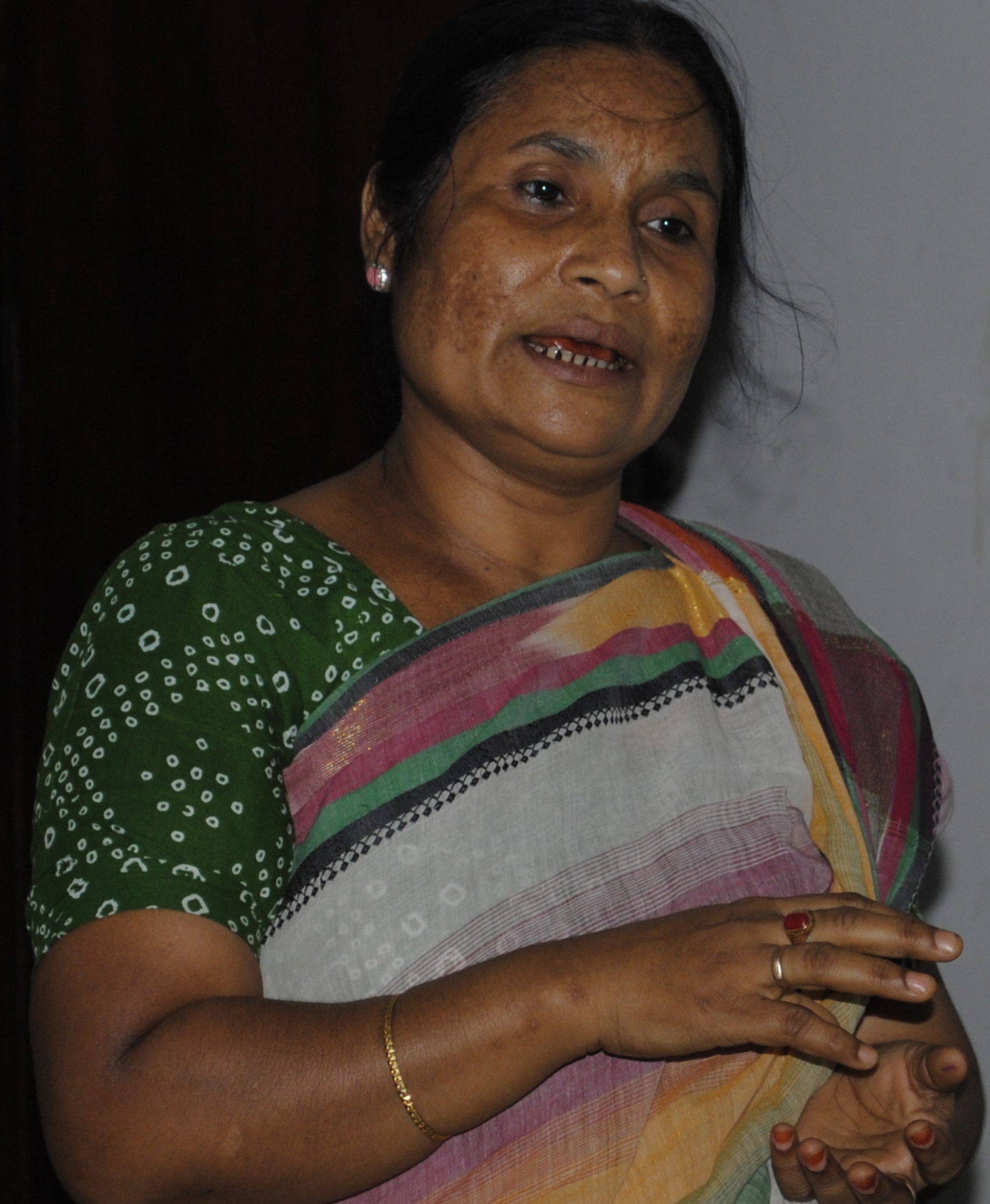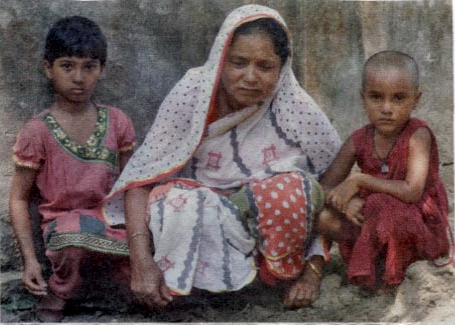
By Shahinur Begum, Researcher, Sramabikesh Kendra of UBINIG (Center for Labor Education)
Introduction
Women wage earners are the cheapest in Bangladesh due to the socio-economic condition of the country, which is why so many girls are employed in the garment industry. About 3.2 million workers are engaged in these factories and 95% of them are women. Now there are about 5,000 garment factories since its inception in late 1970s. Women are the vibrant work force of these factories. Hundreds of workers have to give their lives due to neglect of the owners of the garment factories every year. The families of the victims have been passing their time with extreme hardship due to the death of the earning members. The situation of the children of victims is dire. Soft touch of mother’s hand is the eternal gift for a baby. That lovely mother is gone and gone forever. The situation of orphans is very heavy to bear and hard to hold back tears. It is understandable that there are lots of activities involving the victims just after any accident in a garment factory but there is little space to think about the children of the victims. The present report is prepared to look at the working conditions of women workers and the impact of the Rana Plaza building collapse on their children.
Women Workers’ Key Role in Bangladesh Economy and Garment Industry
Women have been contributing significantly for earning foreign currency for the national economy. They come from poor families of the rural areas. Economic hardship and social deprivation compel them to take up jobs in the garment factories. They prefer to work in the garment factories instead of working as domestic servants, begging, earth filling and brick breaking. Women are neglected in the society. In general, they are responsible for cooking, caring for the husband, mothering and caring for the children. In addition, they are subjected to abuse and ill words if they fail to satisfy the husband and other members of that family. Sometimes they have to face physical torture and violence. Many of them prefer working in the garments to escape domestic violence. Exploitation and violence accompany them from home to factory. In the garment factories, girls are abused, and sometimes sexually harassed.
Garment workers find that there are no definite working hours. The working hours depend on the work in the factory. They have to work 12-14 hours daily. They do not get due wages for their hard work. Even these workers do not get their monthly wage. They do not have any maternity leave. Many vital terms and conditions like weekly holiday, appointment letter and holiday leave have not yet been sorted out. Even the workers do not get an Eid bonus. They do not have right to form a trade union.
With this low wage and horrible working conditions, women workers have been sustaining the garment industries in Bangladesh. The owners of the garment factories have flourished at the cost of the blood of the garment workers. The saddest episode of the garment sector is that hundreds of workers had to give their lives due to sheer neglect of the owners of the garment factories. A class of garment owners under the patronage of the Bangladesh Garment Manufacturers Exporters Association (BGMEA) just make money through illegal means.
The garment owners did not give the due compensation to the families of the victims. Only a few families of the workers got compensation. Hundreds of workers lost their lives in the fires and collapse of buildings. None of the garment owners were arrested and punished except in case of Smart Export Garment. Savar workers died due to the fire in the Smart Export Garment in Mohammadpur on 26 January 2013. The owner, PM and GM of ‘Smart Export Garment’ were arrested. This is probably because the Smart Export Garment is not a member of the BGMEA. They are still in the custody.
On the other hand, the owner of the ‘Tazrin Garment’, being responsible for burning so many workers alive was not charged and is still roaming around without any formal charge. Likewise the owner of the defective building, ‘Rana Plaza’ and the owners of the five garment factories have not yet been punished. It is worth mentioning that 1,127 workers were killed due to collapse of the garment building on 24 April 2013.
Status of Children of Rana Plaza Workers
There are two villages just behind the collapsed Rana Plaza. These are Imandipur and Mazidpur. There are small sheds on two sides of the road. The area is popularly known as ‘Poshak Palls’ (garment villages). The residents are mainly garment workers. Most of the workers of the five garment factories in the Rana Plaza used to live in these villages. Now there are loud cries of the children of the victims of the collapse of Rana Plaza. Some of the babies have lost their mothers while others have lost their fathers. Babies who are breastfed are now being looked after by their brothers or sisters in absence of their mothers. The air in these villages is now heavy with the cries of the orphans. These children have lost their parents, the natural source of security and dependence. The mothers used to take care of their children at night after retuning from work in the garment industry. In the meantime, many of the school going children had to stop their schooling. Some of them have gotten their shelter with close relatives.
It is laid out in the National Children Policy that the state will take the responsibility of the children after such disasters. No such efforts from the state were observed in place after the collapse of the Rana Plaza at Savar.
Photo from Bengali Newspaper, Kaler Kontho (May 5, 2013)
Stories of Orphans
- Rubina (1) is the only daughter of Laki Akhter Shefali and Rubel. Laki and Rubel used to live at Talbag, Savar in a rented house. Laki was working as a helper labor on the seventh floor of the Rana Plaza. Laki could not be traced after the collapse of Rana Plaza. Since the accident Rubina has been crying and searching for her mother restlessly. She does not like to eat anything. At present her grandmother, Rokeya Begum, has been looking after her. Rokeya Begum mentioned “I do not know how to maintain such a small baby without her mother.” Rubina does not like to stay inside the house. She always forces her grandmother out expecting her mother to come back after work. Rubina always expects her mother to come to her. This has been a never-ending expectation. Rubina’s grandmother mentioned only Allah knows, how shall I maintain such a small kid who is desperately desiring her mother to come back every moment. I can not tolerate the sorrows and sufferings of Rubina. Rubina was being breast fed when she lost her mother. She does not like to take anything else. Moreover, we do not have money to buy milk from the market. She is not yet able to eat any solid food. We do not know what to feed her.
- Fatema Akhter Munni (7) is the daughter of Moyna Begum. Her father Abdul Hannan used to work on the seventh floor of the Rana Plaza. Asma, Moyna’s sister ,was also working on the same floor of Rana Plaza. The dead body of Abdul Hannan, Moyna’s husband, was located in the wreckage, but her sister could not be traced. Moyna used to live on a rented house with her husband with a monthly rent of 1,500 Taka per month. Hannan, her husband was the only earning member of the family. Her younger brother, Palash, has come forward to help. He has gotten a job in a garment factory.
- Idris Mia lost his wife Muslima in the tragic collapse of the Rana Plaza. Idris Mia is blind in one eye. His other eye is also affected. They were blessed with a son after 14 years of their marriage. Their son Akash is now one and a half years old. Akash can only feel what he has lost but can not express the inner pain. Idris Mia mentioned the “Akash’s mother was the only earning member of the family. I am unable to work and earn. I do not know how to meet the family needs. Moreover, the only son is always crying for his mother.”
- Shuvo (10) is a student of class IV in the Morning Sun School in Imendipur. His roll number is 3 in the class. Badal Mia, Shuvo’s father used to work in the Finishing Department on the fourth floor of Rana Plaza. His village residence is at Patharghata upazila of the Barguna district. Sheuli, Shuvo’s mother, is concerned about how to bring her son up in the absence of the earning member of the family. At present, they live in a rented house. The rent of the house is 2,000 Taka per month. Sheuli Akhter is very much worried about how she will meet her family expenses and the educational expenditure for her son.
- Zakia Begum, a resident of Bargrna district, lost her life due to the collapse of Rana Plaza. Her husband, Selim, is a van driver. Selim is now having a hard time with his son Helal (17), daughter, Shirin (9) and daughter, Shanta (4). Selim mentioned “Shanta starts crying just at night fall. This is because Shanta used to get her mother everyday just after sunset. Now her mother is far away. She will never come back again.”
- Malika used to work on the fourth floor of Rana Plaza as a helper. Her husband has been unemployed. Mainly the income earned by Malika was the only source of income for the family. They had two daughters, Aklima (5) and Ani (2), Malika could not be traced since the collapse of Rana Plaza. These two small daughters with their unemployed father do not know how they will survive.

Shahinur Begum is an experienced researcher and organizer on women’s issues in Bangladesh, and coordinator of Srambikesh Kendra (Center for Labor Education and Development). This report was written in Bengali and Dr. M.A. Sobhan assisted in translating this report from Bengali to English.
Editor’s Note: While some edits were made for translation purposes, effort was made to retain the voice and views of the author.





